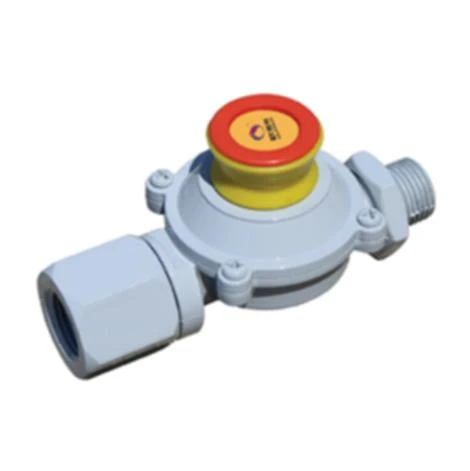
Nov . 19, 2024 09:19
Back to list
Design and Functionality of Pressure Regulation Devices in Fluid Systems
Understanding Pressure Reducing Devices An Essential Component in Fluid Systems
In various industrial applications, maintaining optimal pressure levels is crucial for ensuring safety, efficiency, and performance. One of the key components used to manage pressure within fluid systems is the pressure reducing device (PRD). These devices play a vital role in controlling and regulating pressure, thereby protecting equipment and ensuring the smooth operation of processes across different sectors, including manufacturing, oil and gas, and water treatment.
What is a Pressure Reducing Device?
A pressure reducing device is a mechanical device designed to reduce the pressure of a fluid (liquid or gas) from a higher inlet pressure to a lower outlet pressure. This functionality is essential in preventing damage to downstream equipment, ensuring accurate control of processes, and enhancing overall safety in fluid handling systems. These devices can operate manually or automatically, with automatic pressure regulators being more common in modern applications.
How Does a Pressure Reducing Device Work?
The basic working principle of a pressure reducing device involves the use of a valve that modulates the flow of fluid based on the pressure differential between the inlet and outlet
. When fluid enters the device, it encounters a spring-loaded mechanism or diaphragm that responds to the fluctuations in pressure. If the pressure exceeds the pre-set limit, the valve adjusts to reduce the flow, thereby lowering the outlet pressure.Most modern pressure regulators also feature sophisticated control systems that allow for precise adjustments and monitoring. These systems utilize sensors and electronic controllers to ensure that the pressure remains within desired limits, even as demands change in real-time.
Applications of Pressure Reducing Devices
pressure reducing device

Pressure reducing devices are widely used in numerous applications. In the water supply industry, for example, they help maintain consistent pressure in pipelines, ensuring that households and businesses receive adequate water flow without overwhelming the system. Similarly, in the gas industry, pressure regulators control the flow of natural gas to various consumers, ensuring safe and efficient delivery.
In manufacturing and processing plants, pressure reduction is critical to prevent equipment failure. Over-pressurization can lead to catastrophic failures, costly repairs, and even hazardous situations. By incorporating pressure reducing devices, companies can safeguard their equipment and ensure compliance with regulatory standards.
Benefits of Using Pressure Reducing Devices
The advantages of utilizing pressure reducing devices are manifold. Firstly, they enhance safety by preventing over-pressurization, which can lead to leaks, explosions, or even injuries. Secondly, these devices improve the efficiency of fluid systems by maintaining optimal pressure levels, thereby reducing energy consumption and minimizing wear and tear on equipment.
Moreover, pressure reducing devices contribute to operational reliability. With consistent pressure regulation, processes can operate smoothly, resulting in higher quality products and less downtime. Businesses that incorporate these devices often experience improved performance and reduced operational costs.
Conclusion
In conclusion, pressure reducing devices are indispensable components in various industries, providing a critical function in maintaining safe and efficient fluid systems. As technology advances, these devices become increasingly sophisticated, offering enhanced control and monitoring capabilities that further improve safety and efficiency. By understanding and implementing pressure reducing devices, organizations can optimize their operations, safeguard their equipment, and ensure the safety of their personnel, making these devices a fundamental aspect of modern industrial processes.
Next:
Latest news
-
Safety Valve Spring-Loaded Design Overpressure ProtectionNewsJul.25,2025
-
Precision Voltage Regulator AC5 Accuracy Grade PerformanceNewsJul.25,2025
-
Natural Gas Pressure Regulating Skid Industrial Pipeline ApplicationsNewsJul.25,2025
-
Natural Gas Filter Stainless Steel Mesh Element DesignNewsJul.25,2025
-
Gas Pressure Regulator Valve Direct-Acting Spring-Loaded DesignNewsJul.25,2025
-
Decompression Equipment Multi-Stage Heat Exchange System DesignNewsJul.25,2025

